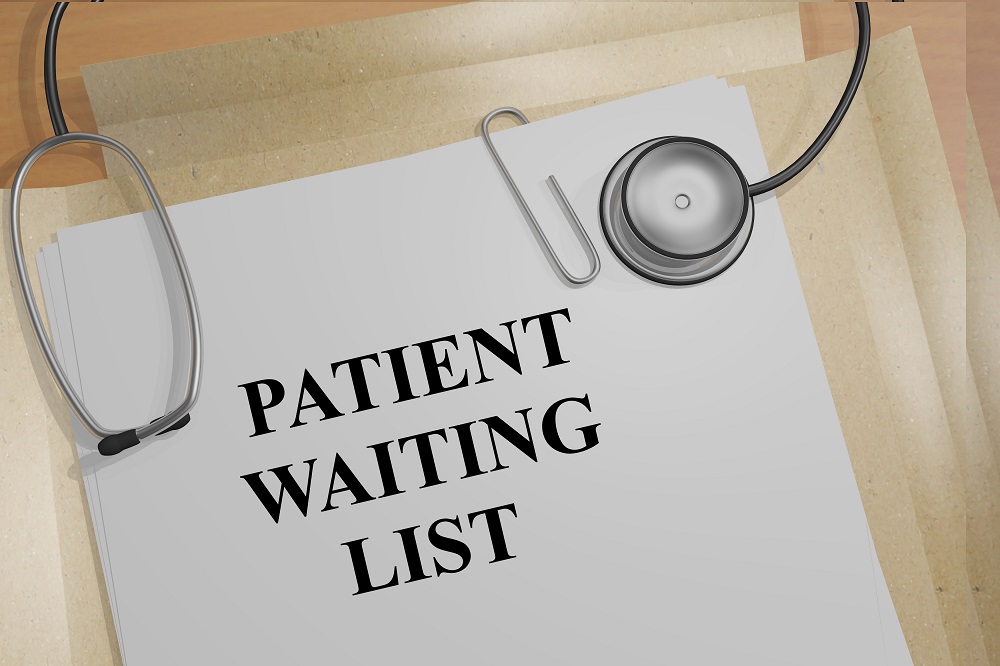Figures published today by NHS England highlight the acute problem of long delays for secondary care referrals. A problem that, once again, often falls on frontline GP practice care to deal with.
According to the latest figures, nearly 225,000 people in England have waited over a year for routine hospital treatment. That’s the highest number since April 2008. Add in the fact that 4.5 million people were waiting to start treatment at the end of December 2020 – the highest number since records began in August 2007 – and it’s a problem that’s not going to go away any time soon.
“Without doubt it’s an issue…yet another we’re having to deal with in primary care,” one PM from a 7,500-patient practice in a Kent town told us. “Our patients have been and continue to be understanding, they know what the situation is, but their patience is running thin. Understandably so, when you’ve been living in pain for months.”
Ripple effect leads to concerns
The latest figures give us a clear, bleak insight into the widely felt ripple effect of COVID-19. As the pandemic continues, so pressures from the likes of ‘Beast from the East 2’ exacerbate pressures and demand on a system facing major backlogs of treatment, alongside reduced capacity due to factors like increased infection control, staff burnout.
These ripples can, of course, spread into a tsunami of problems. A poll of GPs last year found that 77% were concerned delays to operations and treatments for non-COVID-19 issues would result in patients coming to harm. Meanwhile, 30% said an urgent referral had been rejected at the time the survey was undertaken. This will potentially have serious implications for patient care in the longer term and for GPs, it could lead to complaints and criticism.
Also of concern, according to a London-based PM we spoke to, is the wave of patients booking appointments who had previously put off visiting their surgery. “We’re definitely seeing an increase in the percentage of people who are needing to be referred, often because they’ve been putting off seeing their GP. This just adds to the problem.
“The only positive we can really take from the latest figures is that cancer care seems to have been less affected, which will hopefully encourage more people to report to us sooner.”
Indeed, during December just over 200,000 patients received urgent checks by cancer specialists and 25,000 people started their treatment – both measures are in line with the numbers that were being seen before the pandemic.
Responding to the problem
With referral wait times clearly a problem, what can practices do to manage the situation?
“Communication has got to be key,” says the Kent-based PM quoted earlier. “News, such as cancer treatment picking up, needs to be shared with our patients. We’ll share via our Facebook account and on the news page of our website.”
Another practice manager, this time based at a rural practice in Oxfordshire, adds: “I agree that communication is vital. It really all comes down to managing expectations. If patients know what wait time they should be expecting, it’s easier to manage the situation.
“In our area, re-opening of routine referrals has varied widely from service to service, but our Trust and CCG have been very good in holding webinars to discuss issues and maintain open and timely communication between primary and secondary care. The Trust also maintains an up-to-date list of specialties and their current referral status on its website, while regular updates are sent to primary care bi-weekly. This has been really helpful in enabling us to keep patients informed. In most cases people are fine, if they know the score.”
Additional communications tips that are working well for the practice managers we spoke to include:
- Ask GPs to explain clearly whether the referral is urgent or routine and the timescale expected for an appointment. Then ask admin staff to double check the patient understands.
- Ask patients to get in touch if they do not hear anything by the expected time.
- Provide safety netting advice to the patient so that they know what to do if their symptoms deteriorate before their referral is actioned.
- Signpost services that can provide assistance and support while the patient is waiting for their referral.
- Where appropriate, discuss alternatives with the patient, for example, their thoughts on a private referral.
- If a patient reports any deterioration or new symptoms, ensure there’s a mechanism in place to report this to the person or department you have referred the patient to.
- Consider developing a practice policy for referred patients, where wait times are reviewed and followed up on.
- If a GP is moving on, or a locum has been involved, ensure continuity of care through clear handovers to another clinician.
- You have a responsibility to raise concerns if you think that patient safety is or may be seriously compromised.
As mentioned earlier, the problem of long referral waits is unlikely to go away anytime soon, given the continuing pandemic. Hopefully, however, through some effective communication patients will be better informed and understanding of the situation.
How are you dealing with the increasing problem of lengthening referral wait times? Let us know by commenting below, or head to the Practice Index Forum.





0 Comments